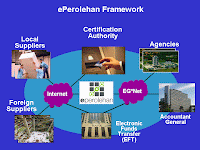Auction can be defined as a market mechanism by which buyers make bids and sellers place offers and is characterized by the competitive and dynamic nature by which the final product is reached. However , e-auctions is the auctions conducted online. http://www.lelong.com.my/ and http://www.ebay.com.my/ are the examples of it.

There are several types of e-auction fraud such as:
- Bid shielding: Tactic used by the buyer to push down the price,
- Shilling : Tactic used by the seller to push up the price,
- Fake photo and misleading description: In reaching for bidders’attention, some sellers distort what they can truly sell.
- Selling reproductions: A seller sells something that the seller claims is original, but it turns out to be a reproduction.
- High shipping cost and handling fees: Some seller just want to get a little more cash out of bidders. Postage and handling rates vary from seller to seller. Some charge extra to cover “handling” cost and other overhead intangibles, whereas other charge to cover the cost of packaging supplies, even though such supplies are aften available for free.
- Failure to ship merchandise: Money was paid out but the merchandise never arrives,
Since the buyers cant see item , they may get a defective item and sometimes the buyers also can commit fraud. Therefore the fraud rate of e-auction is quite high. Thus , something should be take note to prevent it. We can protecting against e-auction fraud by :
1) User identity verification : Verify their IC number , driver’s license number or date of birth. For example, eBay uses the services of Equifax to verify user identities for a $5 fee.
2)Authentication services : Product authentication is a way to determine whether an item is genuine and described appropriately. Authentication is very difficult to perform because it relies on the expertise of the authenticators. Because of their training and experience, expert can (for a fee) often detect counterfeits based on subtle details. However, two expert authenticators may have different opinion about the euthenics of the same item.
3) Escrow services : Ensure that both sellers and buyers in a deal are protected with a independent third party who will hold onto the money until confirmation of good received. An example of a provider of online escrow services is tradenable.com
4) Grading services: Grading is a way to determine the physical condition of an item, such as “poor quality” or “ mint condition”. The actual grading system depend on the type of the item being graded. Different items have different grading system- for example, trading card are graded from A1 to F1 , whereas coins are graded from poor to prefect uncalculated.
5) Non payment punishment: for example, eBay implemented a policy against those who do not honor their wining bids. To help protect sellers, a first-time nonpayment results in a friendly warning. A sterner warning is issued for a second time offense, a 30-day suspension for a third offense, and indefinite suspension for a fourth offense.



